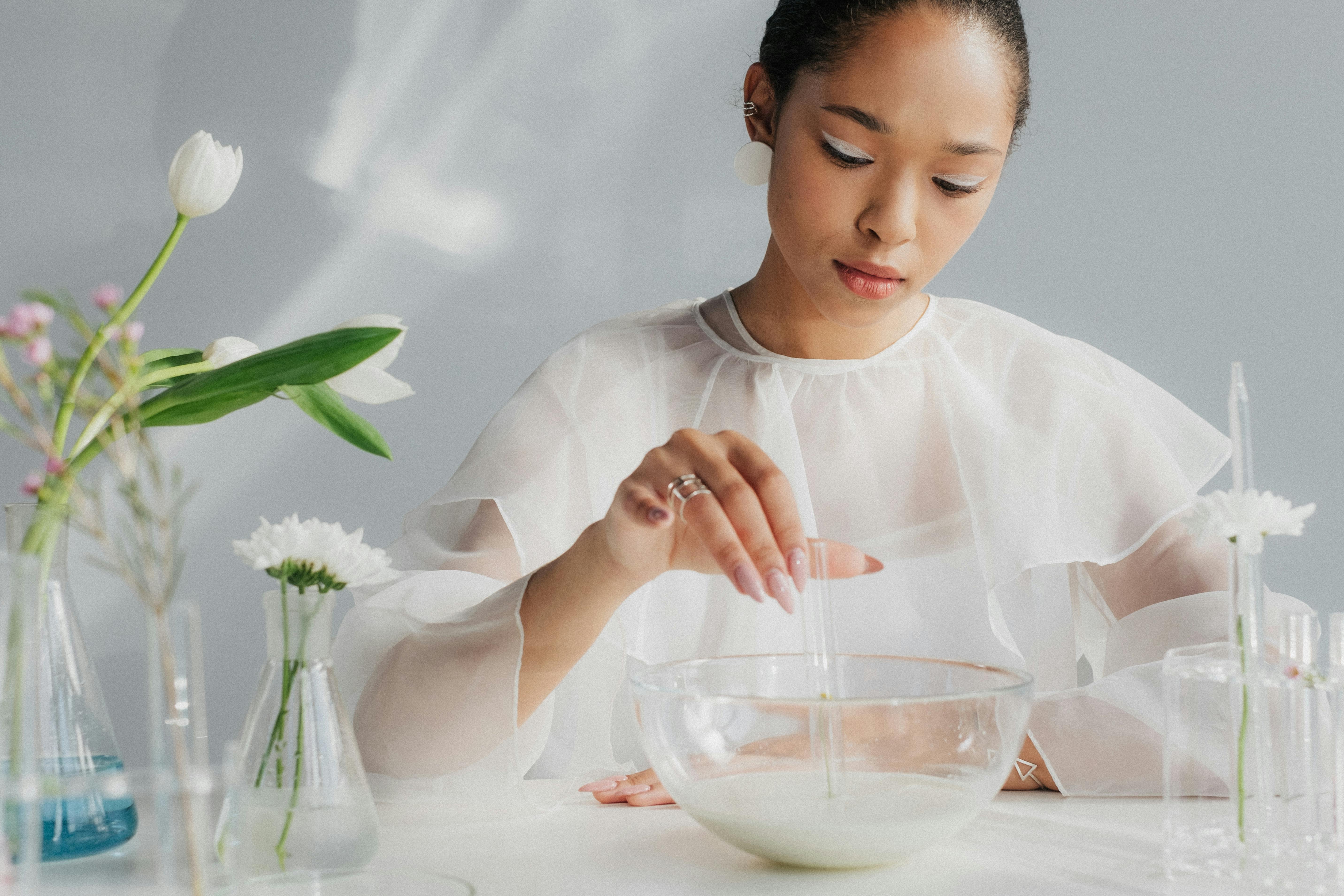Mold on blueberries is a common occurrence and can be easily identified. It has a fuzzy, white or grayish appearance, and may even have a darker color. In some cases, the mold can also be black or green. Mold on blueberries can be identified by its distinctive texture and color. It is important to note that mold can also spread to other fruits and vegetables if left unchecked. Therefore, it is essential to know what mold on blueberries look like in order to properly identify it and take the necessary steps to prevent it from spreading.Mold on blueberries can be identified by its fuzzy and slimy texture. It is usually a gray or greenish color and may appear as spots or patches on the surface of the berry. In some cases, the mold may even appear as a web-like structure over the entire berry. If you find mold on your blueberries, discard them immediately and do not consume them.
What Does Mold on Blueberries Look Like?
Mold on blueberries is easily identifiable and can be spotted quickly. It appears as white, gray, or black patches or threads that often have a fuzzy texture. The mold may also have a musty odor. If you suspect your blueberries are spoiled, it is best to discard them immediately.
Blueberry mold can start to form in just a few days if the berries are stored improperly or left in warm temperatures for too long. The mold can spread quickly so it is important to take action right away if you spot any signs of it. To prevent the growth of mold, store blueberries in the refrigerator in an airtight container and use them within 5-7 days of purchase.
If you do find mold on your blueberries, you should discard them immediately and clean the area where they were stored with hot water and soap. This will help to prevent the spread of the mold spores and ensure that other food items are not contaminated. It is also important to inspect other fruits and vegetables that were stored near the affected blueberries for signs of contamination.
Types of Mold Found on Blueberries
Mold growth on blueberries is a common problem among growers and consumers alike. There are several types of mold that can be found on blueberries, each with its own unique characteristics and effects. The most common molds found on blueberries are Penicillium, Botrytis, and Rhizopus.
Penicillium is a type of mold that can cause spoilage in blueberries. It may appear as a white or grayish powdery substance on the berries or in the soil around them. Penicillium can cause rotting of the berries if left untreated, leading to a loss of flavor and potential health risks.
Botrytis is another type of mold found on blueberries, which appears as grayish-white fuzziness on the surface of the berry. This type of mold is more difficult to remove than Penicillium because it is able to penetrate deeper into the berry’s skin. If left untreated, Botrytis can cause rot and discoloration of the berries, as well as potential health risks from consuming contaminated fruit.
Rhizopus is a type of mold that often appears as black spots or dots on the surface of blueberries. This type of mold can spread quickly and can be difficult to remove once established. It can also lead to rotting and discoloration of the fruit, making it unsafe for consumption if not treated properly.
All three types of mold can be found growing on blueberries, but they vary in their severity and effects. To prevent any potential health risks from consuming contaminated fruit, it is important to identify which type of mold is present so it can be properly treated and removed before consumption.
How to Tell if Blueberries Have Gone Bad
Knowing how to tell if blueberries have gone bad can help you ensure you are getting the most out of your fresh blueberries. When they start to go bad, blueberries become soft, discolored, and shriveled. You may also notice an unpleasant smell coming from them. It is important to inspect your blueberries before eating them, as spoilt fruit can cause food poisoning or other health problems.
The best way to check for spoilage is to look closely at the blueberry’s surface. If it is wrinkled or has any white or gray spots on it, the fruit has likely gone bad and should be discarded immediately. Additionally, check for any mold growth on the fruit, which can be a sign of spoilage. If the blueberry has a sour smell or feels mushy when squeezed gently, it should not be eaten.
Another way to tell if your blueberries have gone bad is by tasting them. If they taste sour or bitter instead of sweet and juicy, they are likely no longer safe to eat. Although this method isn’t foolproof since some varieties of blueberry are naturally more tart than others, it can give you an indication as to whether your berries have gone off or not.
Finally, when storing fresh blueberries make sure to keep them in an airtight container in the refrigerator or freezer. This will help prevent spoilage and ensure that they stay fresh for longer periods of time. It is also important not to wash your berries before storing them as this can cause them to go bad faster.
By following these simple tips you can easily tell if your blueberries have gone bad and avoid any potential health risks associated with eating spoiled fruit. Just remember to inspect the fruit carefully before consumption and store it properly for best results!
How to Avoid Eating Moldy Blueberries
Eating moldy blueberries can cause serious health issues, so it’s important to take steps to avoid them. The best way to avoid eating moldy blueberries is to inspect them before adding them to your dish. Inspect each berry and look for signs of mold, including dark spots, a slimy texture, or a foul smell. If you find any berries that have these signs, discard them immediately.
It’s also important to store blueberries properly in order to keep them from spoiling quickly. Place the berries in an airtight container or sealed bag and store in the refrigerator. You should also use the berries within a few days of purchase for best results. Additionally, be sure to wash the berries before eating or cooking with them, as this will help reduce your risk of consuming mold or other contaminants.
If you notice any mold on your blueberries after washing them, it’s best to discard the entire batch rather than taking a chance and consuming them. Eating moldy blueberries can cause gastrointestinal distress and even lead to more serious health complications if not treated promptly. Taking extra care with storage and inspection is the best way to ensure that you don’t consume any moldy blueberries.

Signs of Spoilage Other Than Mold on Blueberries
Fresh blueberries are a delicious and healthy snack, but if they are not stored correctly, blueberries may spoil. Although mold is the most common sign of spoilage, there are other signs that can indicate the blueberries have gone bad. It is important to pay attention to these signs in order to avoid any potential health risks from consuming spoiled blueberries.
The most obvious sign that the blueberries have gone bad is a change in color. Fresh blueberries will be bright and evenly colored, while spoiled ones may be dull, discolored, or even have white or dark spots on them. Additionally, spoiled blueberries may be squishy or soft to the touch. The smell can also be an indicator of spoilage; fresh berries will smell sweet and fragrant while spoiled berries will have a sharp, unpleasant odor.
It is also important to check for any signs of moisture or liquid around the berries. If the container has any accumulation of moisture inside it, then it is likely that the blueberries have gone bad. Finally, pay attention to the expiration date on the package and discard any berries that are past their prime. Taking these steps can help you avoid consuming spoiled blueberries and ensure you enjoy them at their freshest and best quality.
Potential Health Risks of Eating Moldy Blueberries
Eating moldy blueberries can pose a serious health risk. When blueberries become moldy, the growth of mold can contaminate the berries with mycotoxins, which are toxic compounds produced by some types of fungi. Ingesting these toxins can lead to a number of health complications, ranging from minor digestive discomfort to more serious conditions such as liver damage.
Symptoms that may arise from eating moldy blueberries include nausea, vomiting, abdominal pain, and diarrhea. In more severe cases, people may experience headaches, dizziness, or even seizures. People with weakened immune systems due to illnesses such as HIV/AIDs or cancer may be particularly vulnerable to the toxins produced by molds and could suffer more serious consequences if they ingest contaminated blueberries.
It’s important to remember that not all molds produce mycotoxins. However, it is best to avoid eating any type of moldy food in order to reduce the risk of potential health complications. If you find mold on your blueberries, it is best to discard them immediately and thoroughly wash any containers that have been used for storing them.
Cleaning Up After Finding Mold on Blueberries
Mold on blueberries can be a common problem, especially during the warmer months. If you find mold on your blueberries, it is important to act quickly and clean up properly to avoid any health risks. The first step is to remove all of the affected berries from the container and discard them in a sealed bag in the trash. It is also important to sanitize the container or bin in which you were storing the berries. This can be done by using a solution of 1 part bleach for every 9 parts water and wiping it down with a clean cloth. Be sure to rinse off any excess bleach and allow it to dry completely before storing your berries again. You may also want to consider using an airtight container or bin for storage in order to help prevent future mold growth on your berries.
It is also important to check your other fruits and vegetables for signs of mold, as they can spread easily if left unchecked. If you notice any signs of mold on other items, it is best to discard them immediately as well. Lastly, make sure that your refrigerator temperature is set correctly (below 40 degrees Fahrenheit) and keep an eye out for any signs of mold growth on your produce in order to avoid any potential health risks.

Conclusion
Mold is a common occurrence on blueberries due to their high moisture content and short shelf life. It is important to inspect blueberries before eating them and discard any that have visible signs of mold. If you are unsure whether or not a berry has mold, it is best to throw it away as consuming mold can be dangerous. Fortunately, there are various methods you can use to prevent mold growth on blueberries such as proper storage, using preservatives, and refrigeration. By following these steps, you can make sure your blueberries stay fresh and safe for consumption.
Overall, knowing what does mold on blueberries look like is essential if you want to prevent the growth of this harmful fungus in your fruit. With a little bit of extra care and precaution, you can ensure that your blueberries are always safe for consumption.



